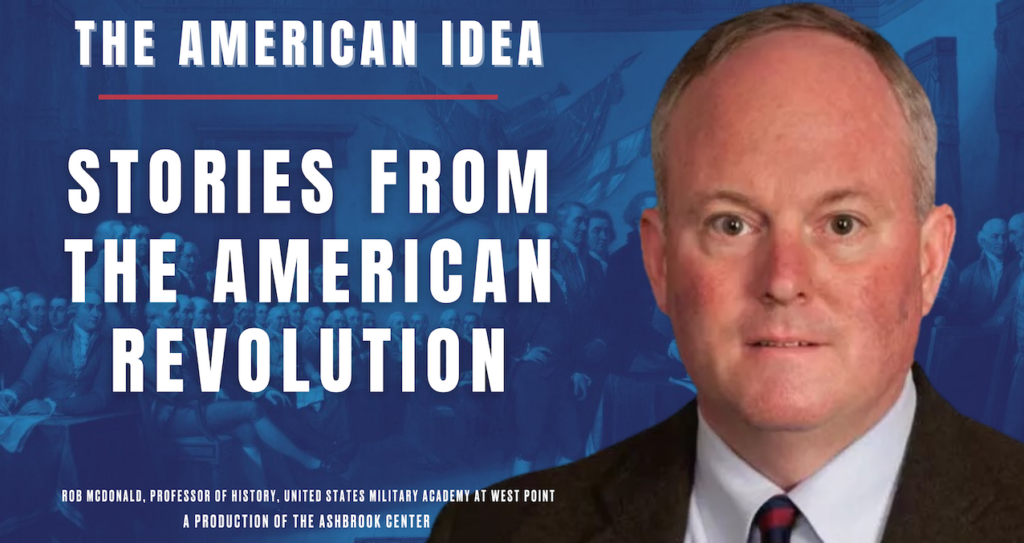Stories from the American Revolution
April 16, 2025

Listen and subscribe to the podcast
Join The American Idea’s Listener Email list – get news about upcoming episodes and a chance to offer questions for them, too!
Revolution vs. War: A Deeper Look at American Independence
The American Revolution was more than just the War for Independence. It encompassed a broader period of escalating tensions between the American colonies and Great Britain, sparked by imperial policies like the Stamp Act and the Intolerable Acts. This era of crisis saw events like the Boston Massacre and the Boston Tea Party, which fueled colonial anger and ultimately led to armed conflict in 1775. The revolution, therefore, is understood as a complex process, not just a military campaign.
Liberty and Identity: The Core of the Conflict
At the heart of the revolution was a fight for natural rights and self-governance. Colonists sought to reclaim the autonomy they felt they had lost, harking back to a time of less imperial interference. This desire for liberty extended beyond political independence, influencing early movements towards the abolition of slavery in some northern states and the gradual recognition of rights for marginalized groups. Early colonists, like veteran Sam Whitmore, initially saw themselves as proud British subjects, valuing the British constitutional system. However, as British policies tightened, this identity shifted. Whitmore’s defense of his property during the battles of Lexington and Concord symbolized this transition from loyal subject to revolutionary.
Tragedy and Propaganda: Shaping the Narrative
The human cost of the revolution was significant. The story of Jane McCrae, caught between loyalist and revolutionary forces, highlights the personal tragedies of the war. Her death, and its subsequent use as propaganda, reveals how personal stories became tools for shaping public opinion. British actions, and how those actions were portrayed, were used to fuel anti-British sentiment. Figures like General Horatio Gates and Benjamin Franklin used such events to further the revolutionary cause.
Washington’s Example: Civilian Power Ascendant
George Washington’s leadership proved pivotal, particularly his handling of the potential military coup at Newburgh in 1783. His actions demonstrated a commitment to civilian authority over military power. His resignation as commander-in-chief solidified this principle, setting a precedent for the peaceful transfer of power. This act, seen as a model of virtue and selflessness, underscored a key tenet of the new American republic.
In essence, the American Revolution was a multifaceted struggle, driven by a yearning for liberty and shaped by both ideological fervor and human drama. It was a period of profound transformation, not only in the political landscape, but also in the evolving identity of the American people, leaving a legacy that continues to shape the nation’s understanding of its founding principles.

